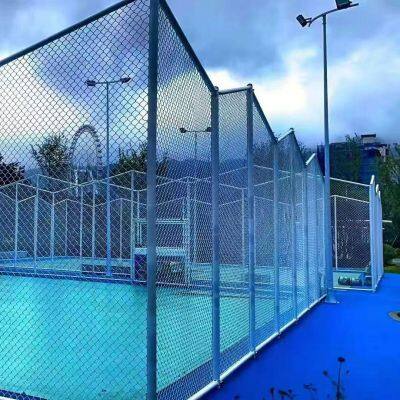-
 Liu
Hi there! Welcome to my shop. Let me know if you have any questions.
Liu
Hi there! Welcome to my shop. Let me know if you have any questions.
Your message has exceeded the limit.

Different Kinds of Fences: Choosing the Right Fence Type and Style
2025-10-09 11:39:10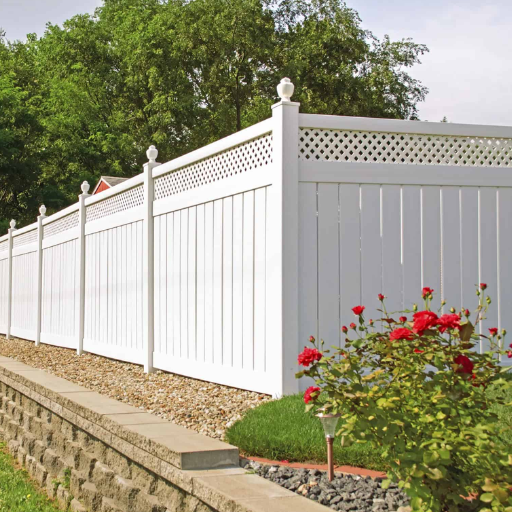
It doesn’t matter whether you want a fence that provides beauty, privacy or simply serves a security purpose because the right one can make a significant difference. If variety is something you love, then you will enjoy the freedom that comes with the vast selection of fences, from classic wooden ones to statement pieces like metallic fences and many that defy the traditional sense of a wall. There are numerous factors to consider when selecting a fence type and design, which can sometimes lead to indecision. This guide helps answer that question by emphasizing the types of fences, their pros and cons, and what to consider when choosing the fence that suits you the most. Are safety, aesthetics, or simple borders what fascinate you? Well, that will not be an issue since the content of this piece will enable you to wear what you would want most. These are the arguments presented in the [name of the article], which will be of use to different kinds of fences. Find more info now.
Understanding Fence Types
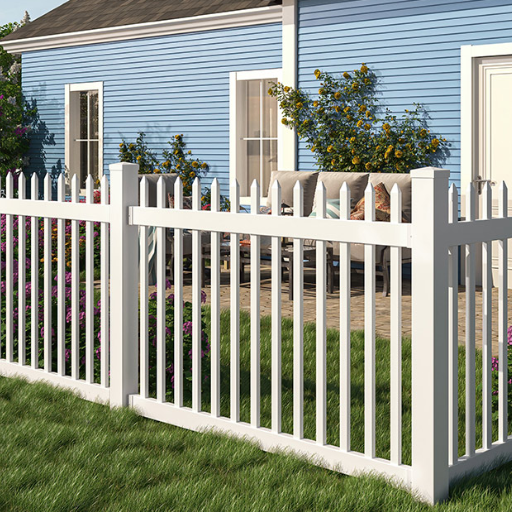
There are different kinds of fences, all these fences are used for various reasons and designed to fit different people’s tastes. Some of the most popular ones include:
Wood Fences: They provide a natural effect, and easy-to-elaborate models are very suitable for privacy reasons and not only. However, wood must be maintained regularly to prevent decay or damage.
Vinyl Fences: These are sturdy and weatherproof types of fences that require minimal care and come in numerous styles, making them convenient for use over a long period.
Chain-Link Fences: When cost-effective and robust domestic fencing is required, these fit the bill; however, they offer little in terms of privacy.
Metal Fences (like aluminum, steel or wrought iron): These can be strong as well as decorative and are mostly used to ensure security.
Composite Fences: These are made of wood fiber and plastic, resembling wood in appearance, with a significant wood component, but the plastic content influences their performance.
Eco-friendly and stylish, bamboo fences are primarily used for decoration and to enhance natural beauty.
Every type has its advantages, but the appropriate type of fence to use will depend on your requirements, namely whether you want to maintain more privacy or security, or are more concerned about longevity, or perhaps you have a preference for a specific design.
For example, to enable planting on a slope, or when creating different kind of garden styles, different kinds of fences are used for aesthetic purposes in such areas.
Overview of Fence Types
When choosing a fence, it is also important to take into account fresh data in terms of hardiness, maintenance, price and impact on the environment. Let us now take a closer look at some of the more popular types of fencing in terms of these factors, supplemented with information from recent studies.
Wooden Fences: Wood remains the most preferred material, thanks to its attractiveness and ease of use, making it an ideal choice for fences. The widely known cedar and redwood are among the types of wood used for their durability. The Drawback, however, is that they are quite expensive and prone to rot when untreated every few years. The initial outlay ranges from $15 to $30 per foot, depending on the type and quality of the fence that is made.
Although most people appreciate vinyl fences due to the ease of maintenance and longevity, it remains one of the most weather-enduring plastic fences for it doesn’t easily warp, rot or even fade. Vinyl fences cost an average of USD 20 to USD 40 per linear foot, which is a one-time expense and entails minimal maintenance over the years.
Chain-Link Fences: This type of affordable fence, which prioritizes practicality over decorative appeal, is the ultimate choice for its users. Chain-link fences are very sturdy, and most security installations utilize them. The cost is between $ 8 and $ 15 per linear foot; they are most suited for large areas, such as a garden or a sports field, yet offer very little privacy.
Composite Fences: Constructed from wood fibers and recycled plastic, composite fences offer an attractive appearance similar to that of natural wood, but with increased resistance and a more sustainable use. Such fences are initially more costly – between $25 and $45 per linear foot - but are very easy to care for and last for 25 to 30 years.
Aluminum Fences: Fences of aluminum are popular for their lightweight yet tough structure and do not corrode. They don’t require a lot of work to keep clean. They also provide aesthetic value to the surroundings, often serving as safety barriers around swimming pools or gardens. The prices vary mainly depending on the style and materials, from 20 to 50 dollars per linear foot.
The above paragraphs represent different kinds of fences as used in the broader discourse.
Bamboo Fences: These types of vendors are widely searched and employed now due to their environmentally friendly qualities. These fences, however, are more decorative in nature and should not be used for extended periods in unfavorable conditions. The prices for these fences are known to fluctuate from $10 to $25 per linear foot.
Wrought Iron Fences: They present elegance and resilience with wrought iron fences, a highly processed sheet and design fence that also lasts for years if necessary. It may be required to apply an anti-rust coating at times and repairing rust may be more costly. On average, since it is a custom-made design and needs more labor, the range is $30 to $50 per linear foot.
Steel Fences: Steel fences are commonly used in industrial or high-security settings due to their toughness and durability. When heavy-duty versions are employed, the cost is quite high, reaching as high as $70 per linear foot; however, these fences provide the best security and protection.
With the help of trend analysis and cost benchmarks, you can decide on the type of fencing that would best suit your property in terms of looking good and providing safety and strength.
Larger, more spacious landscapes use different kinds of fences that you wish to design and install.
Popular Fence Styles
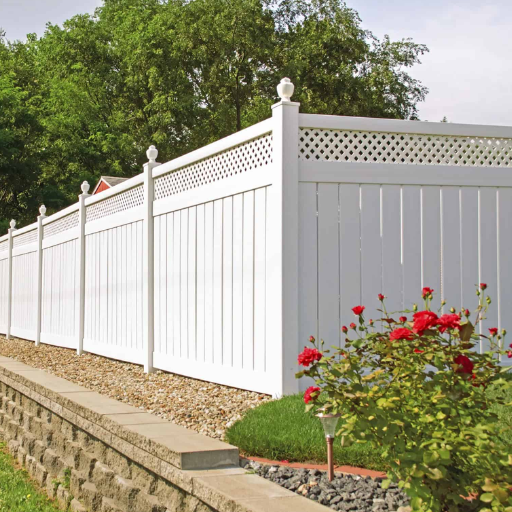
The process of selecting a fence involves considering styles that are both functional and aesthetically pleasing. These include some of the popular fence styles and additionally, the description of these styles is given below.
1. Wooden Fences
The originality and versatility of wooden fences is one of the reasons for their wide application. Their designs are numerous; in fact, there are picket fences, split-rail fences, fenced areas, and so on. With wooden fences, there is an option of staining or painting, meaning they can be changed to suit the house or yard. This allows more flexibility. Typically, wooden fences cost between $12 and $35 per foot, depending on the type of wood used in the fence. One advantage with cedar and redwood as materials is that they are durable or do not rot easily. And when fences made of these types of wood are regularly well taken care of by sealing, fencing, etc., they can serve for more than their expected life span.
2. Vinyl Fences
Vinyl has changed the game thanks to its maintenance-free and long-lasting fencing solution. Available in various wooden-like designs, they can be employed whenever a property owner is concerned about regular maintenance activities. However, the setup of vinyl can be a bit pricey as it ranges from 20 to 40 dollars for one length of fencing; reasonable though, considering toughness and resistance. Such a style will often appeal to a homeowner who desires a neat and tidy looking perimeter without incurring maintenance costs.
3. Chain Link Fences
Chain link fences can be useful when there’s a need to secure a given space or section with limited resources. For example, it’s most suitable for commercial purposes or in schools around playing grounds, sports complexes among other useful uses. The basic chain link fence will cost in the range of 10 to 20 dollars per linear foot; however, the Use of vinyl coating is available with that pricing for further protection from the elements and beautification. Such a fence is strong and easily fixed in place, but it also offers very little privacy.
4. Wrought Iron Fences
Decorative as they, wrought iron fences can also be placed around yards and still look elegant and beautiful. In fact, many homes also have these types of fences for security purposes, considering they have been in place for a long time because they are highly resistant, but they cost $30 to $60 per foot. Simply put, they can easily scare girls away in a nice way as well. Painting is also important because it helps prevent rust, which can affect the color and strength of structures.
5. Fencing Materials: 5. Aluminum Fences
Aluminum fences may look exactly like wrought iron fences; however, they require less maintenance hassle. They are famous due to their lightness, their ability to resist rust, and their versatility in fitting anywhere. Mainly, aluminum fences are used to enclose pools or mark boundaries, and they are priced at $ 20-$ 50 per foot, which is a medium option if both function and appearance are considered.
6. Bamboo Fences
Environmentally friendly and self-sustaining, bamboo fencing has gained considerable popularity in recent years, as it adds a natural and tropical feel. Used often in gardens or as walls to create privacy. Bamboo fencing, as a whole, is a relatively expensive option, with the price of the fencing typically ranging from $15 to $25 per linear foot, depending on the type of bamboo used and its treatment. They also need to be suitably sealed and maintained in order to last longer especially in warm areas with humidity.
7. Steel Fences
Steel fences are strong and offer a high degree of protection. They come in existing contemporary styles as well as in hard industrial ones with corrosion protection coatings. They are among the more expensive options, considering their pricing averages around $30-$70 per linear foot. However, due to their durability, they can be quite cost-efficient for heavier applications.
Considering the various types of fences available, it is possible to make a choice that aligns with one's budget, functionality, and aesthetic preferences for the front of the house.
Vinyl Fences: Durability and Maintenance
While installing a fence remains a matter of personal choice, people are more predisposed to install vinyl fencing due to ease of maintenance, aesthetic value and durability. In contrast to timber and metallic fencing, vinyl offers many advantages since it does not bow or rust like wood and iron, respectively.
In this case, we shall look at five aspects of vinyl fences in the sections below.
Withstand Forces
Vinyl fences have high resistance since they can resist most elements. This results in other advantages where they do not warp, split or even crumble making them appropriate in climates characterized by some hot and cold temperatures.
Practicality
Further, cleaning of vinyl fences does not become so complicated that it will need professional services. Water rinse or a little soap and cloth will do to retain the look.
Shapes and Colors Available
Flat PVC fences are available in various shapes. For instance, there are white picket fences and modern designs too. There are other colors, but they are not easily soiled due to the UV-resistant substances in the vinyl coating.
Designated wood machine made these different kinds of fences without any mistake, that is why we use different types of fences in white colour.
Long-term Sheer Cost Efficiency
The initial budget for its installation averages within the range of $20-$40 per LTE, is indeed higher than the price of wood. However, that cost-effectiveness is achieved due to the absence of maintenance costs using a fence made of vinyl.
Eco-friendly Alternatives
Most modern fence materials today include recycled components which makes them eco-friendly. This also means that they will require less frequent changes, which is more eco-friendly in nature.
Wood Fences: Aesthetic Appeal and Customization
Fences made out of wood are arguably the most eye-catching and are frequently chosen by homeowners to improve the view of stronger, non-decorative fences used traditionally. This is the advantage of the fences of this type because they would not look out of place irrespective of where the house is situated. Be it in a modern or in a cottage style house, warm wooden fences always fit in better than artificial fences. Their simplicity and also warm look are features that will naturally attract people, as opposed to the look that synthetic materials provide.
One cannot overemphasize the benefit of being able to tailor a wooden fence to one’s liking. There are different kinds of wood like cedar, redwood, pine among others, which allows one to choose according to their preferred aesthetic and price range. The option of either cedar or redwood presents itself as an excellent choice, given that they tend to be resistant to these elements and are hence more long-lasting. At the same time, pressure-treated pine is considered the most cost-effective. Moreover, wood fences can be finished with paint or stain, or they can be left bare to accommodate the user's aesthetic preferences. The estimated price to sharpen a wire fence is between $3 and $5 per linear foot, allowing homeowners to maintain their fences throughout their entire life at a reasonable cost.
The next advantage worth mentioning is the tank lusciousness of this building material. This makes it easy for the homeowners to accent a particular yard using picket splints, surrounding the space with privacy planks or enclosing dogs’ area with simple split-rails – depending on people’s needs and reasons of desires. Using wood also offers a high possibility of achieving every described design and more, such as carved and enhanced fences with latticework on top.
Nevertheless, wood fences need to be managed and repaired over time to ensure their aesthetic and structural value is not compromised. Applying a seal or stain to wood every other year or so is advisable. This will prevent the wood from weathering and help it last for about 15 to 20 years or even longer, depending on the environment and quality maintenance. Because of this, the majority argue that it is still worth maintaining the wood fences because of their beauty and diverse use.
Specific Fencing Options
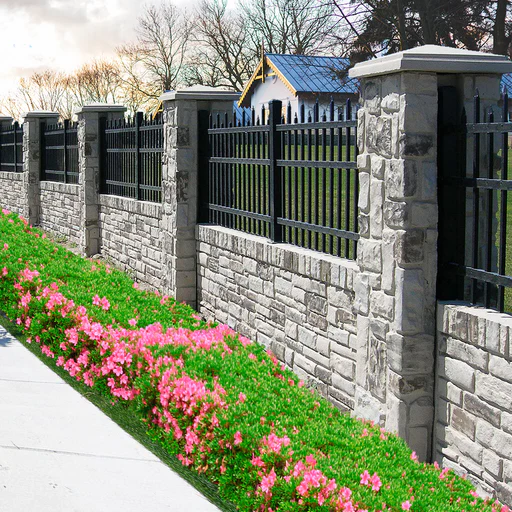
Different Kinds of Chain Link Fencing with Galvanized Coating
Zinc-coated chain length is a perfect fencing structure when there is moisture or weather conditions that tend to affect any zone. It has a galvanized base that resists rust and corrosion.
Chain Link with Vinyl Coating
Vinyl coats also come in different colors and help withstand the wear and tear of natural elements.
Chain Link for Privacy
This Chain Link is a type with extra slats interweaved into the links, and hence arguably both protective and simultaneously more private, conceiving a possible usage on residential as well as commercial premises.
Enhanced Security Chain Link Fencing
Such solutions will predominantly feature smaller mesh sizes and additional features, such as barbed wire, to enhance security in areas where it is most needed, in addition to mesh wires for industrial and military facilities.
All these different kinds of fences have their respective advantages, though you may choose others to suit your practice and circumstances.
Picket Fences: Classic Charm and Curb Appeal
Historically, picket fences are a quintessential representation of the American way of life with its values, aesthetics, appeals. They are simple and arrest the interest of the onlooker. Picket fences, for example, are classically created from wood, while they are now produced from various materials such as polyvinyls, aluminum, and composites, which for the homeowner means long-lasting fences and fewer worries about maintenance. Now, there is evidence that the most preferred kinds are still the classic, aged skirts made of white vinyl, as they can withstand inclement weather and remain clean.
While there are different kinds of fences in use in these gardens, some fences are made of natural materials and have a wooden look.
Zillow’s research highlights an increase in the property vaue by up to three per cent for houses with neat picket fences. It is hard to distinguish modern houses from those of the colonial times by their picket fences, as these vary in height, design, and even color range. Furthermore, picket fences are ideal for a family with children and pets, as they look secure and yet should not prevent contact with neighbors.
In terms of functions, picket fences are useful for marking property lines in a more open way than walls. Every piece of land has boundaries, which picket fences can best outline without compromising the landscape. This works very well in front yards, gardens or small spaces. If you are looking forward to restoring an old house, or just giving a modern look to the exterior of your house, then picket fences do not lose their utility in combining how you want it to look as a fence and its function.
Several ideas have been proposed, including various types of fences that differ in terms of concealment method. For example, where aesthetics are considered essential, fences for gardens are often sacrificial.
Privacy Fences: Enhancing Seclusion and Security
Fences that provide privacy are important elements for homes where the owner needs to be left alone or protected in the yard. These fences are often made of wood, vinyl, or composite, creating a solid wall that prevents not only vision but also sound, making them ideal for areas around the house, such as backyards or those close to roads. Based on recent information from the internet, there has been a rise in the demand as well, for privacy fences as Google trends show an increase in the searches about “privacy fence ideas” over the last half a decade.
Privacy vs, on the other hand, refers to regulations on how tall one is allowed to build privacy fences in order to obtain a high level of privacy and still obey the local building codes. They, however, preferred vinyl privacy fencing due to its ease of maintenance and weatherproof qualities. Statistics predict an expanding market for vinyl fences, with a compound annual growth rate, or CAGR, of 6.3% forecasted for the period 2023–2030 – an indication of customers’ love for long-lasting products.
Aside from their primary purpose, privacy fences have a positive influence on the property market. Fences that are designed beautifully and installed efficiently make a home more marketable, especially in areas where people appreciate their own space. Where loud fences may have previously served as a barrier, the same function is now performed by different kinds of fences that offer various aesthetic advantages — from traditional style vertical planking to the more modern horizontal slat fence, allowing for a better blending with the architecture of the house. Where carefully entangled shrubs or ornamental climbers shall be planted to complement the privacy fence, it is of immense utility, especially in respect of the quiet preparation of the area.
Specialty Fences
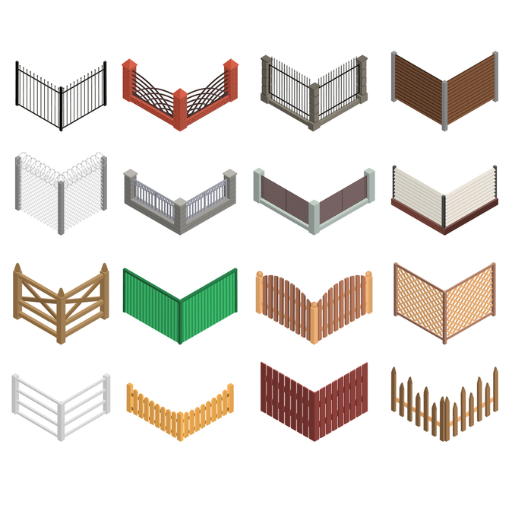
Designs of specialty fences typically fulfill numerous customer demands of a preferred nature, surpassing standard options of ordinary fences. As such, they may comprise decorative or privacy fences to maintain the look or keep the outsiders completely out, or security fences to prevent any breaches. Such materials, often used, include vinyl, aluminum, and composite, due to their longevity and flexibility. Creative aspects can also be seen in specialty fences, such as customized fences or noise control systems and lighting, as peculiar requirements of personal comfort require.
Composite Fences: Eco-Friendly Choices
Composite fences have been widely used by property owners in both domestic and commercial settings, primarily due to their built-in green capabilities and strong ability to remain intact for a long time. These fences comprise a perfect synergy between recycled wooden components and plastic material, making them viable green options for those seeking to utilize them in a more environmentally conscious manner. In recent years, studies show that most composite fence products contain close to or even more than 95% recycled materials, thereby reducing raw material consumption to a great extent.
Composite fences are not just environmentally friendly but also feature interesting benefits, such as built-in resistance to weather, rot, and insects, among others. It is unlike the typical wooden fence, which requires the application of paint or stain; thus, the use of toxic substances is also reduced. Another great feature is that these types of fences have very low maintenance requirements, except for occasional light cleaning.
Wood fences are much older, compared with any contemporary fencing material, most especially composite fencing. This is however changing as modern technology now allows for customizing different kinds of fences to an almost endless possibility. This is because, while a composite fence may cost more during initial construction than wood, the lack of maintenance costs, amortized over the years, considerably offsets any upfront spending, making the composite fence a better financial option.
According to existing market data, an ordinary composite fence provides serviceability for twenty-five, thirty, or even more years, requiring only minor maintenance, which is highly advantageous to anyone interested in green living.
These composite fences come in various shapes and sizes, which suffice to highlight that there is always a solution that fits every user’s unique needs and aesthetics; they are often capable of resembling real wooden structures. Such is the case where homeowners decorate their house in many different ways and go for such solutions to save the environment too.
Lattice Fences: Decorative and Functional
Lattice fences offer convenient and valuable features of many different kinds of fences. That may be the reason why lots of people like them. These fences have the advantage of incorporating geometrical figures, which enhance the design of the fence while also allowing for a transparent outlook and ventilation. To explain the reasons why lattice fences are so popular, let us discuss five important parameters:
Aesthetic Privacy
A lattice fence strikes a compromise between letting out too much or too little. It ensures a level of concealment while simultaneously allowing light and air into the compound.
Perfect for Vines
It is the best type of fence for growing climbing plants like Ivy, Rose or Jasmine due to its pattern. This is far better from a social perspective compared to building higher walls.
Robust Construction
Lattice fencing can be made from various materials, including wood, vinyl, and composite. Each one has its own advantages to offer. Wood has its own classical charm, which is a benefit, while the use of vinyl or composite pipes is advantageous because they require far less attention.
Designs that can be customized.
Lattice fences, which come in different heights, colors, and patterns, can be made to accommodate everyone’s taste. The design is possible in classic white or even natural wood and there are no limits on the design.
Increased airflow and ventilation
In contrast to opaque fences, lattice-work fences allow a free flow of air and are therefore more suitable for patios and gardens. Consequently, they help to create an outdoor area that is more livable and airy when it is warm outside.
Lattice fences complement any home yet also have some uses: these are not only beautiful but also useful, forming a very appealing union.
Factors to Consider When Choosing a Fence
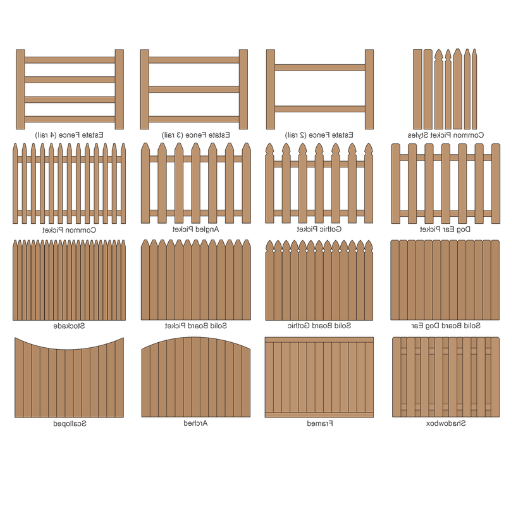
Durability Aspect and Choice of Materials
Durability being one of the most important features of a garden fence, must be taken into account, depends on the material the fence is made of. Some of the materials that are used in erecting fences are metal, wood, vinyl, and composite. Fencing made from wooden materials is undoubtedly very appealing, but it also requires regular maintenance to prevent rot, insect infestations, warping, and other forms of damage, especially in areas with high humidity levels. The use of pressure treated or cedar lumber increases the lifespan of the wooden fence, and the cedar varieties of fences can last up to15–20 years. On the contrary, different kinds of fences, such as aluminum fences or wrought iron fences, exhibit very high strength and durability, often lasting more than fifty years, when the metals are coated to prevent rusting or corrosion.
Polyvinyl chloride (PVC) is used to make vinyl fences, which have been gradually gaining admiration due to their durability (approximately 20-30 years) and reduced maintenance requirements. Another new offer is composite fencing panels, which combine fiber wood and plastic to give effectiveness, durability, and environmental friendliness. Recent constant, in CAGR terms, increase in the composite fencing market globally predicts that, up to 2030, the market may increase by 7.3 percent annually due to high demand for more environmentally friendly products.
Structural Strength
When choosing a fence, it is important to consider its weather resistance since adverse weather conditions can have a dire effect on the fence efficiency. Those who reside in regions that experience excessive rainfall, snow, or scorching temperatures should definitely choose weatherproof fences made from materials such as plastics and metals, which do not absorb moisture, yellow, crumble, or even crack. In this regard, for instance, galvanized steel bodies and vinyl-based fences are more efficient in withstanding weather conditions compared to bare wood fences and thus suitable for such weather-exposed communities.
Size and Security
The functionality of a fence will dictate the size desired. Tall fences (6–8 feet) are advised if security is a concern, so as to make it hard for unwanted persons to enter the compound and also to keep off peering eyes. On the other hand, decorative fences or simply a border can be as short as 3ft-4ft. This is because fences very much depend on the local laws which indicate the permitted height of a fence, therefore, a fence builder must ensure that he or she has checked the zoning requirements and acquired all the permits inherent in putting up a fence.
Pricing and Budgeting
It isn’t easy to distinguish different kinds of fences because there are many of them. Any perimeter fence, of course, serves not only for decorative purposes, but also for many practical ones as well, which is the protection of one’s house and its household from strangers.
Cost is one of the most important aspects to consider when choosing a fence. In terms of cost, wood fences are quite affordable, ranging from $10 to $30 per foot, depending on the type and grade of the wood material used. In contrast to the wooden fence, vinyl fencing ranges from $20 to $40 per foot. However, in the case of installation of metal fences like wrought iron, the cost is on a higher range, as such would go for $30 or even $50 and above. Installing the composite is a good option, although slightly more expensive than chain link or wood fences, with typical prices of about $25 to $45 per linear foot. The fence offers very little maintenance over many years, saving money.
In assessing the whole picture, one might suggest optimum benefits can be derived when the initial cost of obtaining a fence is eye-watering, then offset by lower maintenance and replacement costs in the first year, then onwards.
Demands of Upkeep
Different kinds of fences have varying requirements on their upkeep and maintenance.
The upkeep requirements need to change drastically depending on the type of fence material. The stylish appeal of a wood fence comes with the regular application of stain or polish to extend its service life, which further increases the maintenance costs. Unlike the former, there is hardly any upkeep required for vinyl or composite fences, other than a simple wash with detergent and some water from time to time. These kinds of fences are ideal for busy clients or those who want their money's worth in the long run.
By considering these parameters—sturdiness and durability, the ability to withstand weather conditions, height, cost, and upkeep—homeowners can select an appropriate fencing option that suits their needs, taking into account the prevailing weather conditions and the type of fence they want to install.
Assessing Your Needs and Preferences
When choosing a fencing option, it is essential to realistically evaluate the actual needs and desires that exist, using up-to-date information, if possible. Based on reports from the sector, the typical expense associated with fencing installation as of 2023 is estimated to be between $2,000 and $4,500, which will be determined by the kind of fence, its height and the length of the perimeter to be covered. An example wooden fence may be approx. $15-30 per foot, whereas a vinyl fence, which offers higher durability and less maintenance, ranges from $20-40 per foot.
Solid panel fencing is commonly preferred by owners who prefer no windows around the home. Thus, they are generally recommended to use material comprising wood or vinyl with panels in no less than six (6) feet for efficient shielding. On the other hand, fans of purely decorative barriers, such as aluminum or wrought iron enclosures, which are very elegant, can expect average installation bids of at least a couple of dollars per eight linear feet, and up to twenty linear feet. They prefer different kinds of fences where there are more gaps, fewer walls.
Weather and other elements have a significant impact on what is the best fencing material. For example, in regions where moisture retention is high during warm summer months or hard winters with frequent precipitation, fencing solutions such as vinyl or composite are preferred because they do not rot or warp. Furthermore, nations that have varied climatic conditions tend to use composite materials as they can expand and contract without breakages. By the correct measure, top-notch composite fences have a useful life of 25–30 years, while untreated wood lasts 15 to 20 years without any service.
Different kinds of fences require different materials since the surrounding environment affects the type of material that should be used for fencing. More so, if the occurrences of rainfall and relative humidity are high, or if such places have warm seasons, it is better to use fencing solutions that do not rot or distort such as vinyl or composite. Moreover, countries with warm summers and biting cold winters often use composite materials because they are resistant to climatic changes: composites shrink and expand without damage. To this effect, for the more expensive ranges, it is safe to say that the service life of such fences is predicted to last 25 to 30 years, whereas for untreated wood 15 to 20 years.
Finally, they have to look up the building codes for the area, HOA rules and zoning laws that may restrict the fence’s height, closeness to the user’s property, or the material used. By concentrating on those rules, regulations and interests – how different kinds of fences look like, how they cost, how long such fences serve – people optimizing the problem on fence construction manage to resolve the contradictions within such investments.
Budget Considerations for Different Fence Types
Fence Type | Material Cost (per ft) | Installation Cost (per ft) | Maintenance | Durability | Privacy | Aesthetic Appeal |
|---|---|---|---|---|---|---|
Wood | $10–$30 | $10–$20 | High (staining/painting) | 10–15 years | High (privacy panels) | Natural, customizable |
Vinyl | $25–$45 | $5–$15 | Low (occasional cleaning) | 25–30 years | High | Sleek, modern |
Chain Link | $9–$30 | $10–$20 | Low | 15–20 years | Low | Industrial, functional |
Wrought Iron | $24–$44 | $20–$30 | Moderate (rust treatment) | 20+ years | Moderate | Elegant, decorative |
Bamboo | $6–$12 | $10–$25 | Moderate | 10–15 years | High | Exotic, natural |
Composite | $23–$37 | $20–$40 | Low | 20+ years | High | Wood-like, durable |
Barbed Wire | $1.25–$1.50 | $1–$3 | Low | 10–15 years | Low | Rural, utilitarian |
Electric | $1–$3 | $3–$8 | Moderate | 10–15 years | Low | Functional, utilitarian |
Split Rail | $12–$17 | $12–$17 | Moderate | 10–15 years | Low | Rustic, traditional |
Local Regulations and HOA Guidelines
Before I began constructing a fence, it was essential to familiarize myself with the local laws and guidelines. I reviewed the design standards in the municipal development codes to determine the allowed height and the necessary setbacks. I also reviewed the HOA’s rules and regulations regarding the construction of various types of fences and the materials used. This advance preparation saved me both time and inconvenience, and it also ensured that the fence I installed did not stick out like a sore thumb in the neighborhood’s ordered landscape.
Frequently Asked Questions (FAQ)
What different kinds of fences are there?
Types of fences, such as wooden, vinyl, chain-link, or metal fences, are, in fact, numerous. Each has distinct functions and may suit or combine some styles therefore it is important to find one that will adequately serve the purpose it is fitted for.
Is there a fence that suits my yard and how do I make the right choice?
There are several factors to consider when looking for a fence; however, privacy, safety, appearance, and yard maintenance should be taken into account. Consider your piece of property and the respective boundary fencing, altering it for one or the other, and take into account the type of fences you wish to plant, whether it is just a few posts and wires or other types of fencing, excluding plastic and other metals.
Are there any fences that do not require regular maintenance?
Yes, there are vinyl and aluminum fence alternatives that are low maintenance. Since these two materials do not warrant such a process as will be expected with paint or stainings it addresses the homeowners seeking resilience while otherwise have spelled out their preference for how high management raises.
What is the life expectancy of the fences?
It is essential to note that the materials used in constructing a fence will have a direct impact on its durability. In fact, wooden fences may only last between 10 to 15 years with adequate maintenance. In contrast, metal fences, vinyl fences, and the like can last between 20 to 30 years or more. It is also possible to prolong the duration of these structures by simply carrying out routine repairs.
What are the usual types of fencing?
Also, picket fences, privacy fences or panels are the most popular types of fences. All these designs can be made in quite different materials, including wood, vinyl, or even metal, and thus achieve a totally original appearance of decoration of a house.
Do you have fences for security purposes?
Yes, there are different kinds of fences, such as those made of closely woven chain links with barbed wire, iron gates, or electric fences, which take security to an entirely new level while still maintaining or even surpassing aesthetics.
What purpose does a split rail fence serve?
A split-rail fence is also known as post-and-rail fencing, as it is typically used to keep livestock within a specific area or define property boundaries. This rustic style is one-sided, with most edges horizontal, and it looks more pleasing to the eye in terms of color.
I need help with fencing. Where do I begin?
There are several steps in the process of putting up a fence, including planning the site, the posts, and the panels. To make your life easier, consider buying prefabricated fence panels or hiring laborers to fit and level the fencing structure properly.
Which other materials can be used in building fences and what are other considerations?
Among any other material, junction conditions, maintenance, price and fit should be evaluated when selecting a fence material. Woods, vinyl plastics, and steel sheets, among other options, can be used depending on the purpose, be it to provide privacy, security, or for beautification purposes.
Tags: different kinds of fences
